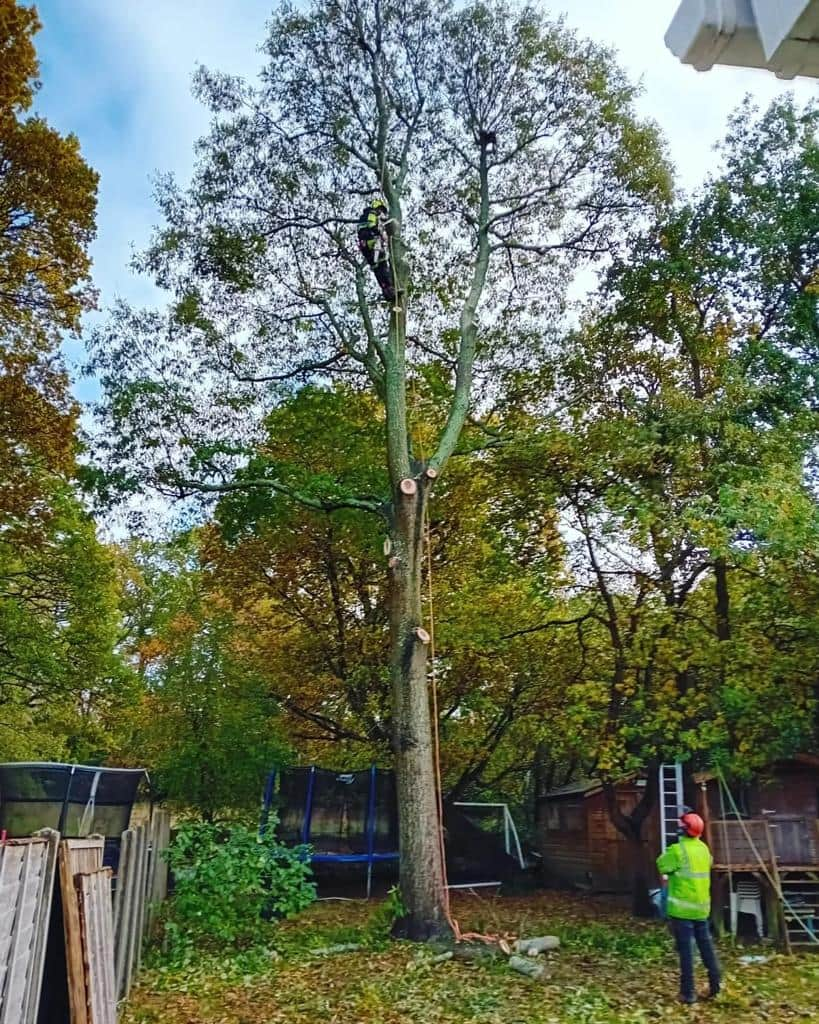Maintaining the health and appearance of trees often requires expert intervention, but not all tree maintenance methods are created equal. Crown reduction and drastic pruning are two common techniques, yet each serves different purposes. At NS Tree Surgery Dorking, we provide professional tree care services tailored to your needs in Dorking, Surrey. In this blog post, we’ll explore when you should choose crown reduction over more drastic pruning measures to preserve both the health and beauty of your trees.
1. Understanding Crown Reduction
Crown reduction involves the selective removal of the outer branches of the tree to reduce its height and spread. This technique is often used to manage the size of a tree without affecting its overall shape or health.
- What It Does: Crown reduction removes branches at the canopy’s edge, focusing on reducing size while maintaining the tree’s natural form. The goal is to lessen the weight on heavy branches and improve the tree’s stability, particularly in adverse weather conditions.
- When to Choose It: Crown reduction is ideal when a tree has grown too large for its surroundings or when branches are threatening nearby structures. It’s also the best option when you want to preserve the tree’s shape while reducing its size.
2. The Risks of Drastic Pruning
Drastic pruning, or ‘topping’, involves cutting large portions of the tree’s branches and limbs. While this can dramatically reduce the size of a tree, it comes with significant risks to the tree’s health and appearance.
- What It Does: Topping involves removing the tree’s upper canopy, which often results in unsightly regrowth. The exposed branches are more susceptible to disease, decay, and stress.
- Why It’s Risky: Drastic pruning can weaken the tree’s structure, leaving it vulnerable to wind damage and reducing its overall lifespan. Additionally, the sudden removal of large sections of the tree can trigger aggressive regrowth, which is often weak and poorly structured.
3. When Crown Reduction is the Better Choice
Choosing crown reduction over drastic pruning is often the best approach when the goal is to manage the tree’s size while keeping it healthy and aesthetically pleasing. Here are some key situations where crown reduction is the preferred method:
- When the Tree is Too Large for Its Location: If a tree has outgrown its space, crown reduction can help keep it in check without compromising its health. For example, if branches are encroaching on buildings, roads, or power lines, reducing the crown can solve the problem without causing long-term damage to the tree.
- When the Tree’s Structure is Imbalanced: In cases where a tree has become top-heavy or has uneven growth, crown reduction can help restore balance. By selectively removing branches, the weight of the tree is redistributed, improving stability.
- When Aesthetic Preservation is Important: If maintaining the tree’s natural beauty is a priority, crown reduction is the gentler option. Unlike drastic pruning, which can leave a tree looking bare and uneven, crown reduction preserves the overall shape and structure.
4. The Long-Term Benefits of Crown Reduction
One of the most significant advantages of crown reduction is its ability to promote the long-term health of the tree. By carefully managing the size and structure of the tree, crown reduction encourages healthy growth patterns and reduces the likelihood of future issues such as branch failure or disease.
- Healthier Growth: Crown reduction promotes healthier, more manageable growth by removing overcrowded or crossing branches. This improves air circulation and allows more sunlight to reach the inner parts of the tree, reducing the risk of disease and decay.
- Reduced Maintenance: Trees that undergo regular crown reduction are easier to maintain over time. By keeping the tree’s size under control, you reduce the need for more drastic measures later, saving time and money in the long run.
5. When Drastic Pruning is Necessary
While crown reduction is the preferred method in most cases, there are situations where more severe pruning may be unavoidable. For instance, if a tree is diseased or dying, removing large sections may be necessary to prevent the spread of disease or to protect nearby structures. However, this should only be done after careful evaluation by a professional arborist.
Conclusion
Crown reduction is an effective and responsible way to manage the size of your trees while preserving their health and natural beauty. Unlike drastic pruning, which can compromise a tree’s structure and vitality, crown reduction offers a more balanced approach that ensures your trees remain strong and visually appealing. At NS Tree Surgery Dorking, we are committed to providing expert tree care services to help you maintain healthy, safe, and attractive trees.
Call us on: 01306 776 298
Click here to find out more about NS Tree Surgery Dorking
Click here to complete our contact form and see how we can help with your tree needs.

